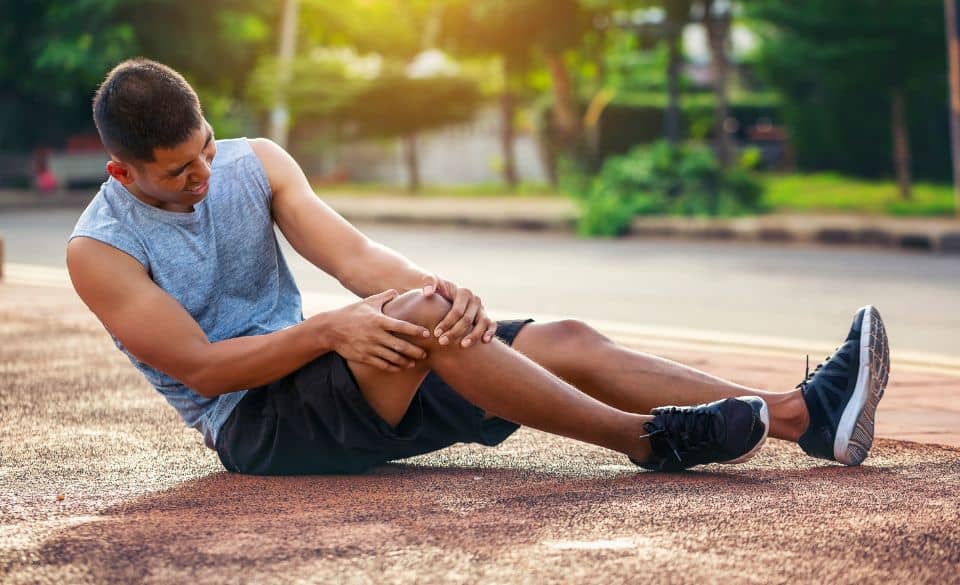
Sore Knee From Running – Symptoms, Pain, Causes, And Treatment
Page Contents
If you’re experiencing pain in your knee, it may be from running. Here’s what you need to know about the symptoms, pain, causes, and treatment of a sore knee from running.
Runners Knee (Sore Knee From Running)
Runner’s knee is a common condition that affects runners and other athletes. It is characterized by pain around the knee joint, often accompanied by swelling. The exact cause of runner’s knee is not known, but it is thought to be related to overuse or repetitive stress on the knee joint. Treatment for runner’s knee typically includes rest, ice, and NSAIDs. In some cases, physical therapy and surgery may be needed.
What Are The Symptoms Of Runner’s Knee?
Runner’s knee is a common injury that can cause pain around the kneecap. It is often caused by overuse, such as from running or jumping. The symptoms of runner’s knee include:
– Pain around the kneecap, which may worsen when bending the knee or putting weight on it
– Swelling or inflammation around the kneecap
– Crunching or popping sensations in the knee joint
If you experience any of these symptoms, it is important to see a doctor or orthopedic specialist for an accurate diagnosis. Treatment for runner’s knee typically includes rest, ice, and physical therapy. In some cases, surgery may be necessary to repair damaged tissue.
What Causes Runner’s Knee?
Several different things can cause runner’s knee. One of the most common causes is overpronation. This is when your foot rolls inwards too much when you run, and it puts extra strain on the kneecap. Another common cause is weak thigh muscles. If your quadriceps (thigh muscles) are weak, they can’t support your kneecap as well, and this can lead to runner’s knee. Other possible causes include:
– Overuse
– Trauma to the kneecap
– Misalignment of the kneecap
– Dislocation of the kneecap
– Flat feet
– Poor stretching before exercise
– Arthritis
– Fractured kneecap
– Plica syndrome or synovial plica syndrome, in which the lining of the joint becomes thickened and inflamed
In some cases, pain begins in the back or hip and is then transmitted to the knee. This is known as “referred pain.”
If you think you might have runner’s knee, it’s important to see a doctor or physical therapist. They will be able to diagnose the problem and recommend treatment. Treatment options vary depending on the cause, but they may include things like stretching and strengthening exercises, orthotics (shoe inserts) and changing your running shoes.
How Is Runner’s Knee Diagnosed?
To diagnose runner’s knee, your doctor will ask about your symptoms and medical history. They will also perform a physical examination. X-rays may be taken to rule out other causes of your pain, such as a fracture. An MRI or CT scan may also be ordered to get a better look at the structures around your knee.
Your doctor may also ask you to complete a series of tests, such as:
The McMurray test – during which you bend and straighten your leg while your doctor applies pressure on the outside of your knee
The Apley scratch test – during which you lie on your back and bring your knees up to your chest while your doctor scratches the inside and outside of each knee
The patellar grind test – during which you kneel on a hard surface and your doctor moves your kneecap from side to side.
How Do You Treat Runners Knee?
Runner’s knee is usually treated with a combination of self-care measures and physical therapy.
Self-care measures may include:
– Resting your knee
– Applying ice to reduce swelling
– Taking over-the-counter pain relievers such as ibuprofen (Advil, Motrin IB) or naproxen (Aleve)
– Wearing a knee brace or strap to support your knee joint
Physical therapy may include: Exercises to strengthen the muscles around your knee Stretches to increase the range of motion in your knee joint Ultrasound therapy to reduce inflammation Electrical stimulation to reduce pain
In some cases, your doctor may recommend surgery to repair damage to the structures around your knee. This is usually only recommended if conservative measures have failed to relieve your pain.
How Can You Prevent Runners Knee?
There are a few things you can do to prevent runner’s knee, or at least lessen your chances of developing the condition.
First, be sure to warm up before you run. A good warm-up will help increase blood flow to your muscles and lubricate your joints.
Second, be sure to wear the proper shoes for your feet. This is particularly important if you have flat feet or high arches. Wearing shoes that don’t provide enough support can put undue stress on your knees.
Third, avoid running on hard surfaces such as concrete. Running on softer surfaces such as dirt trails or grass will help reduce the impact on your knees.
Finally, if you are overweight, losing weight can help reduce the stress on your knees. Just a few pounds can make a big difference.
If you do develop runner’s knee, there are treatments that can help. Rest, ice, and over-the-counter pain medications can all help manage the pain. If the pain is severe, your doctor may prescribe stronger medication or recommend physical therapy. In some cases, surgery may be necessary to repair damaged tissue.



